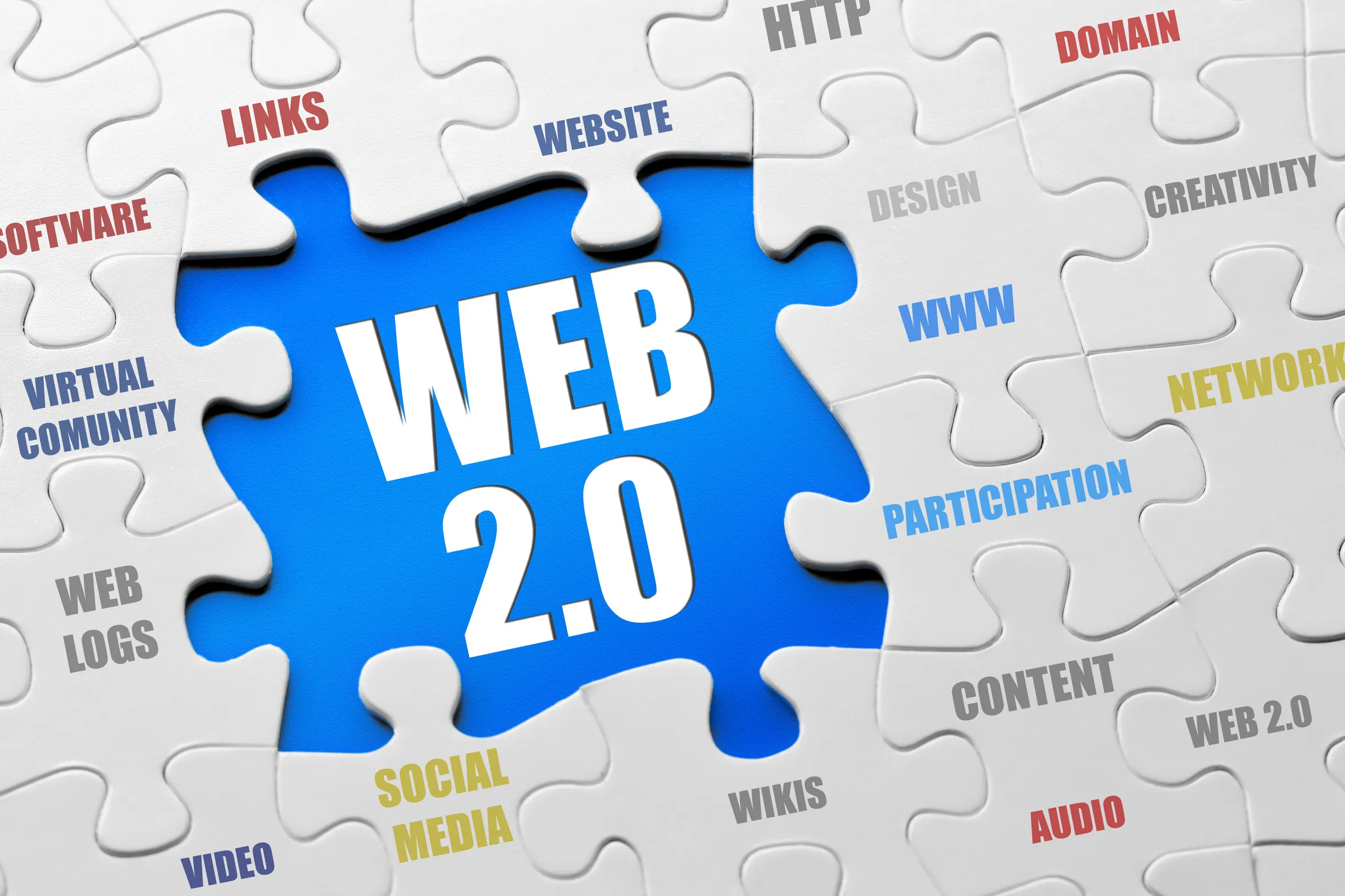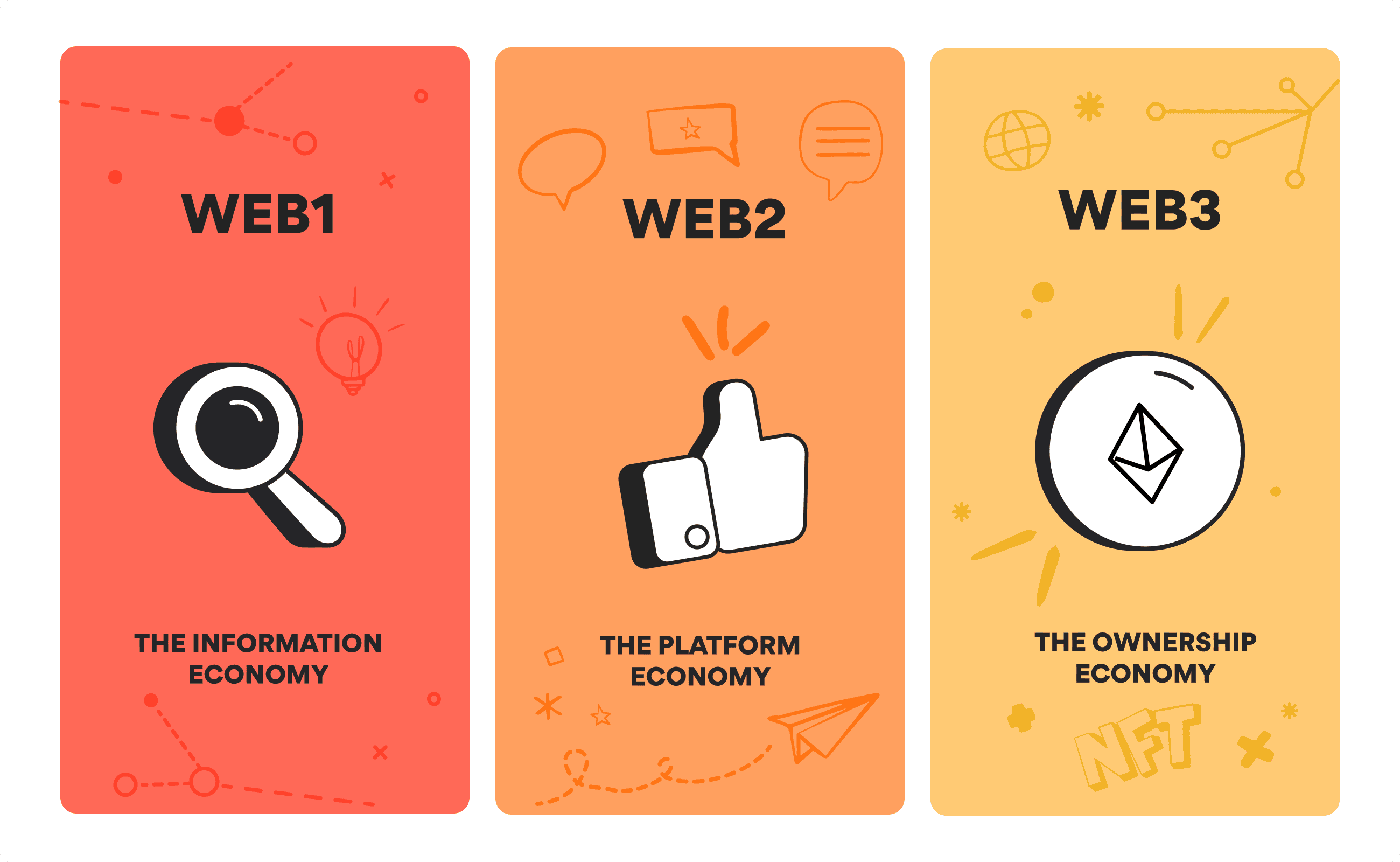Since its beginning in the late 1960s, the Internet has advanced significantly. The Internet has experienced numerous changes, evolving from a wartime communication tool to a crucial component of our daily existence. The emergence of various World Wide Web versions, including Web 1.0, Web 2.0, and Web 3.0, is one of the most significant shifts in the development of the Internet. From the early days of Web 1.0 to the interactive Web 2.0 and the intelligent Web 3.0, the evolution of the Internet has been transformative. In this piece, we’ll examine the traits and features of these three web forms as we travel through the history of the Internet.
The Static Web or Web 1.0
The first version of the web, referred to as Web 1.0 or the inactive web, first appeared in the early 1990s. The primary purpose of this web was to give users access to read-only content. Websites lacked interaction and were inert. Users couldn’t engage with the website’s material; they could only read it. Most of the material on websites from the Web 1.0 era was text and pictures.
During the Web 1.0 period, web developers utilized HTML (Hypertext Markup Language) to construct web pages, providing a simple and straightforward approach to website development. JavaScript was used for simple functionality, such as rollover effects on icons, while CSS (Cascading Style Sheets) was used to add formatting to websites. Early Web 1.0 webpages lacked design sensibilities and were plain and unattractive.
The Interactive Web or Web 2.0
Early in the 2000s, Web 2.0 appeared and marked a significant departure from Web 1.0. The web in this period was more social, engaging, and user-driven. User-generated content, which allowed users to add to the web by producing and sharing their material, was introduced by Web 2.0. Social media platforms like Facebook, Twitter, and Instagram emerged and quickly assimilated into everyday routines.
Web 2.0 webpages were engaging and dynamic. They allowed users to communicate with one another and the website’s material. Web 2.0 websites featured a variety of text, pictures, audio, and video material. The websites provided an incredible user experience and were aesthetically appealing.
Various computer languages, including HTML, CSS, JavaScript, and server-side scripting languages like PHP and Ruby on Rails, were used to create websites during the Web 2.0 period. With the help of these languages, programmers could build more dynamic and engaging websites, allowing functions like real-time updates, instant messaging, and video conferencing.
The Intelligent Web or Web 3.0
The most recent version of the web, known as Web 3.0, marks the next stage in the development of the Internet. The semantic web or the intelligent web are other names for this form of the Internet. The goal of Web 3.0 is to improve the web’s intelligence, usability, and personalization. The objective is to develop a web that can recognize user preferences and instantly deliver pertinent material to users.
Machine learning and artificial intelligence (AI) are the primary components of Web 3.0. (ML). These tools are employed to give consumers a more tailored web encounter. Blockchain technology, which allows safe transfers and decentralized data storage, is also a component of Web 3.0.
Websites built for the Web 3.0 era will be highly personalized, with material adapted to users’ tastes and interests. Since the websites can comprehend standard English, users will find it simpler to conduct online information searches. Users will be able to communicate with the web using natural language and other vocal instructions thanks to Web 3.0.
Websites designed for the Web 3.0 era will combine new technologies like cryptocurrency, AI, and machine learning. With the aid of these technologies, web designers will be able to build websites that comprehend user behavior and tastes and instantly adjust to them. Additionally, the websites will be able to offer readers suggestions and search results that are more precise and pertinent.
Web 1.0, Web 2.0, and Web 3.0
After learning more about the three types of the web, let’s examine their main distinctions in more detail.
Web 1.0 was read-only, meaning consumers could only access and ingest content. Websites needed to be more engaged, were unattractive and were stagnant. Most of the material on websites from the Web 1.0 era was text and pictures.
Web 2.0 was an interactive web that allowed people to communicate with each other and with website material. Social media networks and user-generated material were both introduced by Web 2.0. The websites had a lot of movement, were engaging, and looked good.
Web 3.0 is a clever internet where websites can comprehend user behavior and tastes and offer personalized content. The web will be more customized, safe, and intuitive. A mix of AI, ML, and blockchain is for building websites, enabling more precise and pertinent search results and suggestions.
Conclusion
The development of the web is evidence of how far the Internet has come since its beginning. Web 1.0, Web 2.0, and Web 3.0 each mark essential changes in how we communicate online and with one another. Online 3.0 is the period of intelligent and personalized online encounters. Web 1.0 was the dawn of the Internet; Web 2.0 was the age of social media.
It’s fascinating to speculate about the state of the Internet in the future as technology develops. We’re getting closer to a web that can recognize our tastes and behavior and give us a personalized experience thanks to Web 3.0. We are excited to see what the web will look like in the future because it will be clever, straightforward, and personalized.






